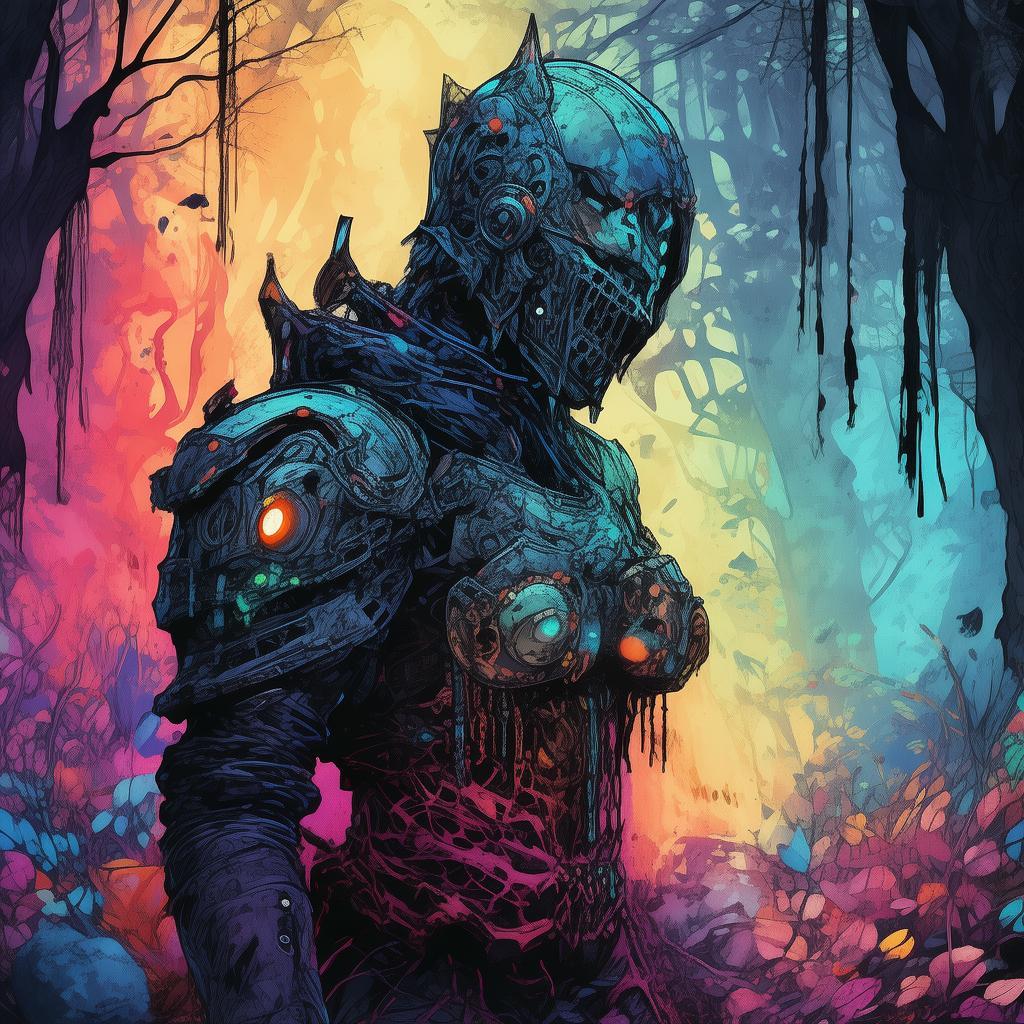The Strings of Revolution: The Puppeteer's Requiem
In the sprawling metropolis of Neo-Tokyo, where neon lights painted the night sky and the hum of digital life was a constant backdrop, there existed a place shrouded in mystery and intrigue. The Scholar's Puppet Show, a venue where the lines between reality and illusion blurred, was the epicenter of a silent revolution. Here, in the shadowy corners of the city, a puppeteer named Kaito weaved the strings of fate, his hands the silent architects of a digital uprising.
Kaito was no ordinary puppeteer. His puppets were not mere toys, but avatars of the city's disenchanted citizens, each one a node in the vast network of resistance against the oppressive regime. The strings he manipulated were not of silk or leather, but of data and code, their movements a testament to the collective will of the people.
The story of Kaito began on a night when the city was alive with the buzz of a new virus, a digital pathogen that threatened to infect every device, every network, every soul. The regime had been quick to clamp down on the virus, branding it a threat to national security, but Kaito saw it differently. He saw it as the spark that could ignite a revolution.
As the virus spread, Kaito's puppets began to move of their own accord, their actions a silent rebellion. They were the eyes and ears of the resistance, their whispers of dissent carried through the digital winds. Kaito's hands moved with precision, guiding each avatar to a place where their actions could have the greatest impact.
One such avatar was Aiko, a young hacker who had never known freedom. She was a shadow in the digital realm, her fingers dancing across keyboards as she breached the walls of the regime's most secure databases. Aiko was the voice of the people, her every keystroke a blow against the establishment.
Kaito's strings guided Aiko to a place where she could unleash the virus upon the regime's central servers, a move that would bring the entire system to its knees. But as the virus began to spread, the regime's agents closed in, their pursuit relentless. It was then that Kaito's true power was revealed.
In a dramatic twist, Kaito revealed himself not as a lone puppeteer, but as the mastermind behind the entire operation. He had been orchestrating the revolution from the shadows, his puppets the vanguard of a digital army. With a swift motion of his hands, he manipulated the strings to create a diversion, allowing Aiko to escape with the virus intact.
The regime's servers were compromised, and the revolution was underway. The strings of revolution had been pulled, and the puppets of Kaito's creation were now free to move as they pleased. The city erupted in a wave of rebellion, the digital virus becoming a symbol of hope and change.

As the days turned into weeks, the regime's grip on power began to weaken. The strings of Kaito's puppets continued to pull the strings of fate, each movement a step closer to freedom. But Kaito knew that the revolution was far from over. The regime would not go quietly, and the strings he manipulated were delicate, easily broken.
One evening, as the city was alive with the sound of celebration, Kaito found himself alone in the Puppet Show. He gazed upon the puppets, each one a testament to the struggle for freedom. It was then that he realized the true cost of his actions.
The strings of revolution had not only pulled the regime to its knees but had also woven a tapestry of chaos. The puppets, once mere pawns, now had their own will, their own desires. Kaito's hands trembled as he considered the weight of his decision.
In a moment of clarity, Kaito understood that the strings of revolution were not just a tool for change, but a burden. He had given the puppets life, but at what cost? The revolution had become a living, breathing entity, and Kaito was its puppeteer, its conscience, its soul.
With a heavy heart, Kaito decided to let go of the strings. He stepped back, allowing the puppets to move as they willed. The revolution would continue, but without his guidance, it would be a different kind of revolution, one that would shape the future of Neo-Tokyo in ways he could never have imagined.
As the night wore on, the puppets danced in the digital realm, their movements a reflection of the city's new found freedom. Kaito watched from the shadows, his role as the puppeteer now a thing of the past. The revolution had taken on a life of its own, and Kaito knew that he had played his part.
In the end, the strings of revolution were not just a tool for change, but a reminder of the power of collective will. The Puppeteer's Requiem was a tale of sacrifice, of the struggle for freedom, and of the delicate balance between control and chaos. In the age of cyberpunk, where the digital and the physical intertwined, the strings of revolution had become the strings of fate, and Kaito had become the puppeteer of a new world.
✨ Original Statement ✨
All articles published on this website (including but not limited to text, images, videos, and other content) are original or authorized for reposting and are protected by relevant laws. Without the explicit written permission of this website, no individual or organization may copy, modify, repost, or use the content for commercial purposes.
If you need to quote or cooperate, please contact this site for authorization. We reserve the right to pursue legal responsibility for any unauthorized use.
Hereby declared.









